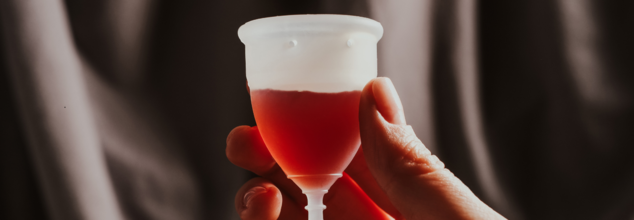
(Credit-Canva)
How A Poorly Inserted Menstrual Cup Can Be Dangerous? Step-By-Step Guide To Place It Correctly
Menstrual cups have been a great way to lower the amount of single use products as it generates a lot of waste! Pads and tampons are considered wasteful and harmful for plastic and non-biodegradable material it uses and the impact it had on our bodies.
People are now switching to period panties and menstrual cups for better comfort and ease. But what many people forget is that there is a lot that can go wrong when you place your menstrual cup incorrectly.
In a new recent story shared on social media, a woman got diagnosed with kidney issues because her menstrual cup wasn't inserted right.
Menstrual cups are a small, reusable intimate product used to collect period blood. It is not only good for maintaining menstrual hygiene but is also good for the environment.
While the problem occurring due to incorrectly placed cup is rare, experts say it's important to use them properly. This woman from Denmark who shared her journey of suffering on social media, had pain and blood in her urine for six months and later doctors found out that the menstrual cup used by this woman was pressing on a tube that carries urine from the kidney. To the woman's surprise once she stopped using menstrual cups, her symptoms went away, and she had no pain.
How Poorly Fitted Menstrual Cups Can Be Dangerous?
The problem arose because the menstrual cup wasn't sitting where it is supposed to be. The cup was pressing on the tube that carries urine from the kidney to the bladder, essentially blocking the flow. This blockage led to pain and other symptoms for the woman. While this is a very rare occurrence, it emphasizes the importance of understanding how the cup interacts with your body.
Lancet health explains that a poorly fitted menstrual cup can cause issues like leakage from improper fit or fullness, pain or minor injuries from insertion, rare allergic reactions, and possible urinary problems due to urethral irritation or blockage. Though infrequent, IUD dislodgement has been reported, but it's difficult to definitively link it to cup use. Infections, including the very rare toxic shock syndrome (TSS), are possible if cups aren't properly cleaned, but studies suggest they may be less risky than tampons or pads. Overall, while complications are possible, they are generally infrequent.
The size of the cup, how it's placed, how long it's used, and each person's unique body shape all play a role. Even though this kind of complication is unlikely with regular use, it's a good reminder to pay attention to how you use menstrual cups and to be aware of potential issues.
The size of the cup, how it's placed, how long it's used, and each person's unique body shape all play a role. Even though this kind of complication is unlikely with regular use, it's a good reminder to pay attention to how you use menstrual cups and to be aware of potential issues.
How to Insert a Menstrual Cup Correctly
Learning to use a menstrual cup properly might take some time and practice. If you have questions about which cup to choose or how to use it, your gynaecologist can provide guidance. It's common to have some difficulty during the first few uses, but most people become comfortable by their third menstrual cycle. Here is how you insert it for use,- Thoroughly wash your hands with soap and water before handling the menstrual cup.
- There are various ways to fold the cup for insertion, such as the C-fold, 7-fold, or punch-down fold. Experiment to find which one works best for you.
- Find a comfortable position, such as squatting or sitting on the toilet.
- Gently insert the folded cup into your vagina, aiming it towards your tailbone.
- The cup should sit just below your cervix and feel comfortable. It should sit lower than a tampon.
- Once inserted, the cup should open and create a slight suction against the vaginal walls. You can gently rotate the cup or run a finger around the base to ensure its fully open.
- If your experience any pain or discomfort, it’s important to consult with a health care professional or your gynaecologist.
© 2024 Bennett, Coleman & Company Limited

